We are located at the centre of the University Park campus with its
enviable facilities, including abundant green space, swimming pool and large sports centre,
playing fields, restaurants, coffee shops, bars, shops and high quality halls of residence.
The School of Geography shares the large and well-equipped Sir Clive Granger building with
the School of Economics. In addition to lecture theatres, seminar rooms, a newly refurbished coffee/snack bar and
meeting areas, the School provides a range of more specialised facilities. These include:
|
The David Ebdon Computing Laboratory
This state-of-the-art facility houses over 97 high-specification PCs for use
exclusively by Geography students. The lab is open 24 hours, 7 days a week, with access
via smart card. |
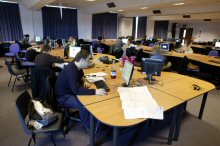 |
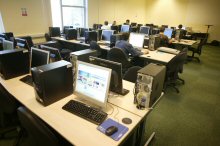 |
The Graduate Computing Laboratory
This laboratory houses more sophisticated and powerful computing resources for
advanced geographical studies and, particularly, for GIS. Computers are equipped with
state-of-the-art software capable of, for instance, three-dimensional modelling of
geographical spaces and terrain systems, and satellite image processing. |
SPLINT Project 3D Visualisation Laboratory
The use of 3D visualisation both within a lab context and in a field context is a major focus and complements existing research interests and activities within the GIS group. Virtual models of a field site in Cumbria, England, and the University Park campus in Nottingham are the main test environments being developed. [SPLINT project] |
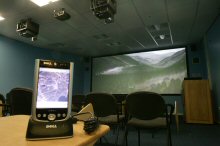 |
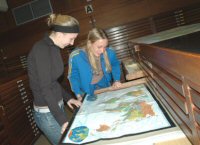 |
The Edwards Resource Centre
This large facility acts as the primary undergraduate resource room. It holds the
University map collection plus a wide range of atlases, gazetteers and almanacs for
reference use. PCs are available for internet access and viewing DVDs and CD-ROMS.
There are also large amounts of 'grey literature' and teaching support materials, which
are constantly updated and replaced. |
|
The School of Geography has three laboratories dedicated to the physical and chemical analysis of sediments and water. These are complemented by research quality light microscopes which are available for approved projects. All laboratory users must agree to follow the laboratory safety procedures and will be asked to sign COSHH forms where these apply. |
The Swinnerton Undergraduate Laboratory
This laboratory facility, designed and built specifically for undergraduate use, was completed in 2004. It is named after Professor H. H. Swinnerton who was the first Head of the then joint department of Geology and Geography. Up to 50 people can work in the laboratory at any time and it can also be used as a lecture room. Students use the laboratory as part of some 2nd and 3rd year modules, as well as for dissertation work. [more] |
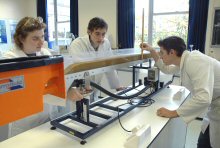 |
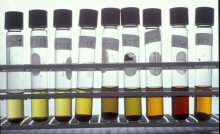 |
The Cuchlaine King Research Laboratories
This laboratory provides research facilities for staff, postdoctoral research fellows and postgraduate students. It was substantially restructured in 2006. The laboratory is named after Cuchlaine King who was Professor of Physical Geography 1969 - 1982 [more] |
|
Environmental Change Laboratory The environmental change laboratory is used for research involving luminescence dating of sediments, with applications principally quartz and feldspar minerals. The laboratory is well equipped with two TL-OSL readers as well as alpha counters and gamma spectrometers to measure the natural radioactivity of samples and a SOL2 solar simulator for optical bleaching experiments.
Contact: Michèle Clarke
|
| Palaeoecology Microscopy Suite |
Safety Information
Before starting work in the laboratory it is essential to have a safety induction with the laboratory technical staff. This should take no more than 20 minutes and can be arranged by contacting the Technicians or visiting the Swinnerton laboratory.
All procedures carried out in the laboratory must have a completed Risk and COSHH assessment. For Standard procedures in the laboratory the technicians will already have a copy which you should read before starting laboratory work. If you are designing your own experiment or changing an existing procedure you will need to complete these forms and have them checked. Blank forms and instructions for writing COSHH and risk assessments can be found using the following link.
Safety Web site (Maintained by the Safety Officer Michèle Clarke)
If you are in any doubt about a procedure you should contact the laboratory technical staff. |
Field Equipment
The laboratories house a wide range of field equipment for use on organised field trips and for independent dissertation research.
Equipment request form |





